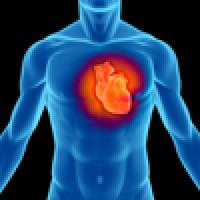
Modelling the immune system

Mathematicians are leading a group of scientists who have taken on the challenge of building a common model of immune system responses.
The Immunology Imaging and Modelling (I2M) Network is supported by the Biotechnology and Biological Sciences Research Council (BBSRC) and aims to provide a common reference point for the multi-disciplinary immunology research community. It is led by researchers from the University of Leeds and also involves researchers from Cancer Research UK, National Institute for Medical Research, the Institute of Child Health, University College London, and the Universities of Strathclyde, Stirling and Utrecht in the Netherlands.
The scientists are using real-world experimental data to generate a virtual model of the human immune system, with the hope that this model can be used for drug design. Despite huge recent advances, including the development of many drugs that target the immune system, scientists still do not fully understand it.
Dr Carmen Molína-Paris, network coordinator and researcher at the University of Leeds, said: "Mathematical immunology is maturing into a discipline where modelling helps everyone to interpret data and resolve controversies. Most importantly, it suggests novel experiments allowing for better and more quantitative interpretations."
The first role of the mathematicians is to devise theoretical and computational models of the various cellular components of the immune system. Such models, it is hoped, can then be commonly used by immunologists, mathematicians, computer scientists, physicists and engineers.
By leading the network, the mathematicians hope to provide quantitative analysis for the traditionally qualitative science of immunology — cellular mechanisms and molecular components of the immune system are generally described by words rather than numbers. To further understand how the human body fights disease, it is vitally important to understand how the system works as a whole, and how one part of the system quantitatively affects the others.
Mathematical models are increasingly being used by pharmaceutical companies to predict the efficacy of a drug. The maths ranges from predicting atomic effects (using quantum mechanics) and molecular effects (how well a drug binds to its targets), to modelling whole organs and even organisms by predicting the results of a clinical trials. This is known as systems biology.
Advances in computer technology have allowed more complicated, and user-friendly, models to be used. This can help the pharmaceutical industry avoid late-stage failures and so lower the cost of drug development."A multi and cross-disciplinary, cohesive and active approach is urgently required," said Dr Carmen Molína-Paris. "The ability to track parasites and cells in real time using novel imaging techniques is allowing exciting new insights and will help us measure the interactions between the different parts of the immune system. This will provide a theoretical and computational model of the immune system, giving a complete picture that researchers from across all disciplines can refer to and draw upon."
Steve Visscher, interim Chief Executive of BBSRC commented: "The new insight that this [...] will provide will naturally benefit the patient with the advances in health care it will lead to. BBSRC is committed to developing an active and cohesive cross-disciplinary community at the mathematics biology interface to enable a more quantitative and predictive biology."
The network is planning to host a summer school for postgraduate students to provide cross-disciplinary training, and will also support postgraduate students to spend time in research labs at other member institutions.
The mission of the BBSRC is to fund internationally competitive research, provide training in the biosciences, foster opportunities for knowledge transfer and innovation and promote interaction with the public on issues of scientific interest.